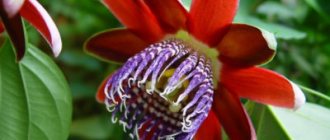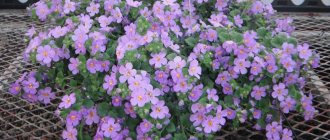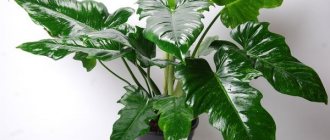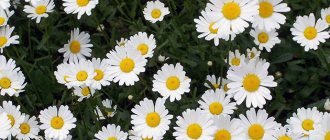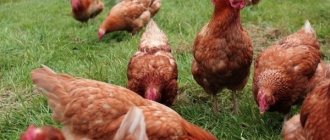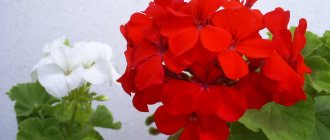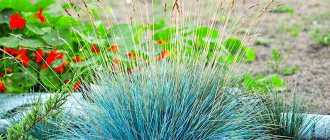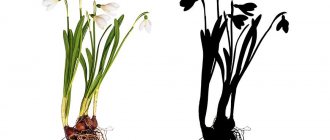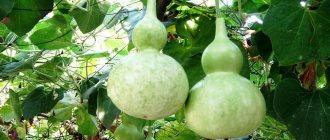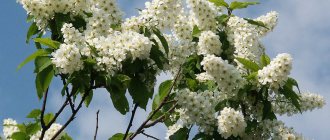Description of the plant
Fescue (Festuca) is a genus of perennial cereal grasses that are used to decorate lawns and lawns of parks throughout the Northern Hemisphere, and not just in Russia. In the wild, the plant grows in meadows and forest edges, where it forms peculiar clusters with many straight stems.
Red fescue (Festuca rubra) is one of the species of this genus. It is used as lawn grass. Typically, the crop grows on meadow slopes and embankments, often rich in other types of vegetation. The base of its stem is covered with short white hairs, and numerous underground rhizomes form a dense, attractive turf 10–15 cm high.
Did you know? Fescue, like other cereals, can be affected by ergot, which releases alkaloids that are toxic to living beings. In this case, it becomes dangerous for mares due to the risk of death of the offspring.
Botanical description:
- leaves : thread-like, narrowly sinuous, rough along the edges and veins, 3–15 cm long, 0.4–0.6 mm wide;
- inflorescence : this is a dense, one-sided, ovoid, dark purple or purple-brown panicle 1–2 cm long, occupying less than 1/4 of the length of the stem;
- flowers : loose, short, rough, on a long stalk, have a sinuous spine;
- reproduces : by seeds, root shoots.
Fescue is used as a lawn or pasture grass because it is a genus that contains more than 100 individual plants. It is considered one of the most nutritious for animals and abundantly growing herbs, which will easily germinate even in wasteland or uncultivated areas in mining areas, therefore it is considered valuable in the fight against soil erosion.
Fescue varieties
Lawn grass has several varieties, each of which will decorate any garden plot:
- Hairy fescue has short roots but good density. This fescue variety perfectly tolerates lack of water and soil salinity, so it can be sown along transport roads.
- Tough fescue is a winter-hardy plant with dark green leaves. It has no rhizomes at all, so hard fescue grass is usually grown with lawn plants that have good roots.
- Meadow fescue grows very quickly and has soft stems that do not thicken as it grows. In landscape design, meadow fescue is used for lawns and for decorating gardens and squares. The plant tightly covers the surface of the earth already in the first year of planting. The resulting meadow fescue seeds can be collected and planted the following year.
- Red fescue is the most densely growing grass of the representatives of this plant. It has stronger roots that quickly adapt and cover empty spaces. The plant is suitable for complex planting on lawns.
Advantages and disadvantages of using the plant as lawn grass
Red fescue can be more effective in areas prone to increased soil erosion, much more so than native plants. It will also grow well where the land urgently needs to be cultivated. Red fescue also resists drought and has very low fertilizer and water requirements. And this is the main advantage of culture.
Did you know? People created names for wild herbs based on associations. Thus, a grass similar to oats received the name “fescue”.
- Among other advantages, it is noted that it:
- adapted to various types of soil;
- cold-resistant, suitable for northern territories;
- tolerant of soil salinity;
- tolerant to irrigation and water quality;
- recovers quickly;
- perfectly adapts to the climate;
- forms an abrasion-resistant, even lawn;
- can be mowed up to 5 mm in height;
- is resistant to diseases.
The main disadvantage of the species is its invasiveness. It is able to reproduce not only by seeds, but will also colonize unoccupied territories by spreading rhizomes. Therefore, fescue has both advantages and disadvantages.
The second important disadvantage is that red fescue meadows, if not mowed regularly, form such a dense structure of rhizomes that it prevents the growth of any other plants. To avoid this, you must not forget about proper and regular haircuts.
Diseases
Red fescue is resistant to plant diseases, but can be affected by rust or powdery mildew.
When affected by powdery mildew, spots appear on the leaves, which gradually increase in size and become purple in color. As a result, the leaf dies; if there are few leaves damaged by powdery mildew, they are removed, and then the bush is treated with a solution of soap and soda ash, copper oxychloride or a solution of potassium permanganate.
If signs of the disease are detected, treatment is carried out once a week; for the purpose of prevention in the summer, plants are sprayed once a month.
Rust appears as small spots on rusty or orange leaves. They gradually increase and lead the plant to death. Areas of the bush affected by rust are removed and sprayed with fungicides.
Sowing the lawn
Planting a lawn from scratch is simpler and easier than it might seem. You will need to follow a number of simple steps to get a beautiful area with smooth green grass on it.
Important! When making mixtures, pay attention to the fact that red fescue will tend to dominate, so do not combine it with tender grasses for an English garden lawn.
Important steps in planting a lawn:
- choose a time;
- check and improve (if necessary) the soil;
- buy seeds;
- plant them;
- water;
- Keep your new lawn healthy.
Seed selection
Poor quality seeds will definitely be the main reason why the lawn turns out to be ugly.
Each package has a tag indicating:
- list of herbs;
- their number;
- percentage;
- purpose;
- germination rate;
- germination percentage.
It is also advisable to see data on the percentage of weed germination through the grass you have sown, but domestic seed packers often skip this parameter. It is preferable that the bag contains 2-3 types of herbs, one of which is fescue, and the second is similar in technical characteristics. And on its label the purpose is indicated - “For the lawn.”
Also find out whether it is necessary to lay geotextiles under the lawn, its selection and installation.
Leading agricultural companies usually produce seeds pre-treated with a growth stimulant and fungicides against fungal diseases. Therefore, it is more economical to buy them. The measures taken will ensure better growth and disease resistance.
Domestic producers usually combine fescue with meadow bluegrass. Both crops have the same requirements for growing conditions. But they react differently to high humidity, excess or lack of sun. Therefore, if one of the grasses is exposed to negative environmental influences, the lawn will still remain green, because the second plant does not respond to the problem. Both grasses also match in color, so your lawn will be uniform.
Sowing time
Under natural conditions, the seeds fall to the ground at the end of summer after ripening, overwinter safely and begin to germinate in the spring as soon as favorable weather arrives. Therefore, lawn sowing is possible both in spring and autumn. The only period not suitable for planting is mid-summer. At this time, the bright rays of the sun evaporate a lot of moisture and the herbs will have to fight for survival. Therefore, focus on the time when the air temperature is at +12°C and there is enough water in the soil.
You will be interested to learn about common lawn diseases and their treatment.
Planting process
The seed planting technology will be as follows:
- Dig up the area to a depth of 10 cm. Remove debris (sticks, stones). Break up large clumps of soil. Do not crush too much so that the seeds do not sink deeper than 1 cm into the soil, because then not all of them will germinate.
- Level areas where water may accumulate. Here the grass will get wet and you will have to frequently “repair” the green cover.
- Do not use fungicides to kill weeds. If necessary, cover the area with dark plastic film. Under it, under the influence of the sun, the soil will warm up, and weeds, seeds and pests will die.
- Apply a starter lawn fertilizer to the soil. For example, “Fertika”, “Fasco”, “Terrasol”, “Complex”, “GreenView”. Follow label directions when applying.
- After applying top dressing, the soil must be irrigated.
- Now distribute the seeds evenly over the area. On average, you need 30-50 g/m². If you do not have a dispenser for uniform distribution, then increase the rate indicated on the package by 15%. Also remember that you don’t need to add even more, because... the creeping rhizome will still fill all the free areas.
- Sprinkle the seeds with a layer of soil, but so that it does not exceed 1 cm. Gardeners advise covering the seeds with a small layer of straw instead of soil. The porous structure retains soil moisture and provides oxygen access. The soil should be kept moist at all times to increase the chances of germination.
If the area is heavily shaded, make sure the seed packet is marked “For Shady Areas.”
Red fescue: Description, cultivation, care, reproduction + Photo and Video
Red fescue is a perennial grass that is found everywhere in nature.
Many gardeners and owners of suburban areas know it as a lawn plant, which is quite easy to grow and does not require special care. In nature it grows in meadows, in agriculture it is used as a pasture plant, in the arrangement of urban sports fields it is often used as a covering for football fields, tennis fields, and also for golf courses, which are not very common in our country.
The peculiarity of this herb is its creeping roots with many medium and small branches. Red fescue literally entwines its roots right through the soil. The roots are capable of penetrating to a depth of about 1 meter into the ground in search of water, but if watering is sufficient, the roots are located no deeper than 15-20 centimeters from the soil surface.
How to properly care for fescue
After the lawn is seeded, it needs to be maintained periodically. Follow simple instructions and perform regular maintenance to keep your herbs healthy and weed-free. Most of the work will take place in the spring and fall.
Important! Owners of mowers with a roller need to remember that the cutting direction must be changed every time so that the grass is evenly shortened.
Main works and their features:
- Remove weeds and dead grass regularly. They can inhibit growth by blocking air and nutrients from reaching the roots. There will be quite a lot of weeds in the first few years. These are seeds that were in the soil, and those brought by birds or animals. In places where there is excess moisture, moss may appear. In order to reduce its amount, it is necessary to reduce the humidity and also improve the drainage of this area.
- Aeration is needed to maintain the vital activity of soil microorganisms and the development of the root system. The process involves piercing the soil in different places with a garden fork to allow air to enter the deeper layers of the soil.
- Periodically you will need to mow the lawn with a lawn mower. Do not cut after frost or when the grass is wet. This increases the risk of plant infection by fungi and other phytopathogens.
- In places where plants have died out for some reason, you need to re-sow the seeds . To do this, choose a moderately warm day, and sow according to the scheme described above. Timely elimination of such bald spots prevents the colonization of the free area by weeds and moss.
- Fertilizers are required once or twice a year. It would be correct to feed the fescue with nitrogen compounds in April or early May, and in the fall to add potassium and phosphate mixtures.
- Along with nutrition, watering is a must. The amount and frequency of irrigation will depend on the soil type and weather conditions in the region. It is optimal to water the grass at the beginning of growth at moderate temperatures to achieve the best effect.
The use of fescue in landscape design
Red fescue is suitable for the lawn as a background plant to fill empty spaces on the site. It goes well with other ornamental crops. Using grass to decorate flower beds and lawns in combination with other plants will give a complete look to your decorative idea.
The use of fescue in landscape design
Lawn grass is a real decoration for any summer cottage or garden plot. And the unpretentiousness and beautiful appearance of fescue have made it a favorite of many gardeners.
